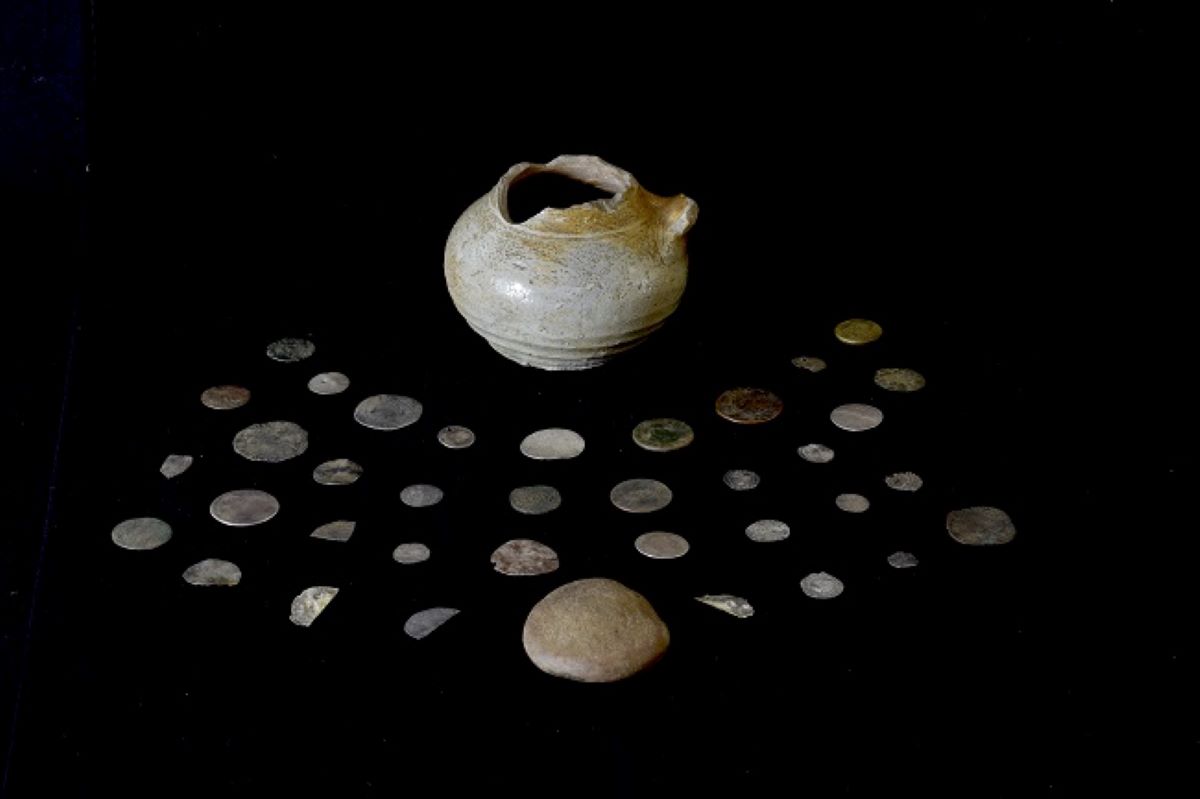Coins linked to an infamous massacre that saw nearly 40 people slaughtered have been discovered under a grand fireplace in Scotland.
The hoard of coins was found in a small pot at a house that used to belong to Alasdair Ruadh “MacIain” MacDonald of Glencoe, chief of the MacDonald clan from 1646 to 1692, a press release from the University of Glasgow reported.
Uncovered by archaeology student Lucy Ankers, the coins had been placed under a grand fireplace, at a summerhouse in Glencoe, in the Scottish Highlands, over 300 years ago.
The 36 coins all vary in date, however none of them came after the 1680s—this suggests that they could have been placed there either during, or just before the infamous Glencoe Massacre of 1692, archeologists believe.
As estimated 38 members of Clan MacDonald of Glencoe were killed by government soldiers during the massacre. This was because the clan remained loyal to King James VII, who had been exiled, and were part of the first Jacobite rising of 1689. The massacre took place on February 13, 1692.
The coins may have been placed there for safekeeping during the massacre, but they were never retrieved. This indicates that the clan member may have been killed during the massacre.
“These exciting finds give us a rare glimpse of a single, dramatic event. Here’s what seems an ordinary rural house, but it has a grand fireplace, impressive floor slabs, and exotic pottery imported from the Netherlands and Germany. And they’ve gathered up an amazing collection of coins in a little pot and buried them under the fireplace,” Dr. Michael Given, co-director of the University of Glasgow’s archaeological project in Glencoe and senior lecturer in archaeology, said in a press release detailing the finds.
“What’s really exciting is that these coins are no later than the 1680s: so were they buried in a rush as the Massacre started first thing in the morning of the 13th February 1692? We know some of the survivors ran through the blizzard and escaped up the side glens, including this one: were these coins witnesses to this dramatic story? It’s a real privilege, as archaeologists, to hold in our hands these objects that were so much part of people’s lives in the past.”
Other objects discovered in this area indicate that the summerhouse was used frequently as a hunting lodge and feasting hall by the chief members of the clan throughout the 17th century, the University of Glasgow reported.
Other artifacts uncovered indicate the high status of those who gathered there. Objects found as well as the hoard of coins included pottery, as well as evidence of leather and glass working.
“These excavations have allowed us to better understand how landscapes such as Glencoe might have been occupied and managed through the early modern period,” Edward Stewart, an archaeology PhD student and the excavations director of the University of Glasgow’s archaeological project in Glencoe, said in a press release. “Our previous investigations of the nearby summer shieling settlements offered an opportunity to understand how communities of herders lived and worked in these landscapes, now the excavation of ‘MacIain’s Summerhouse’ allows us to better understand the importance of these uplands to local elites.”
“The scale of this structure and the wealth of artefacts uncovered within suggest this was a place where the MacDonald chiefs could entertain with feasting, gambling, hunting and libations. The discovery of this coin hoard within the structure adds an exciting dimension to this story. However, ordinary and everyday finds within this structure such as spindle whorls for making thread, a pitch fork, and a dress pin, speak to the everyday lives of those who lived here, worked the land and minded the cattle, allowing us to tell their stories as well as these grand tales of chiefs and their retinue.”
Do you have a tip on a science story that Newsweek should be covering? Do you have a question about archeology? Let us know via science@newsweek.com.

